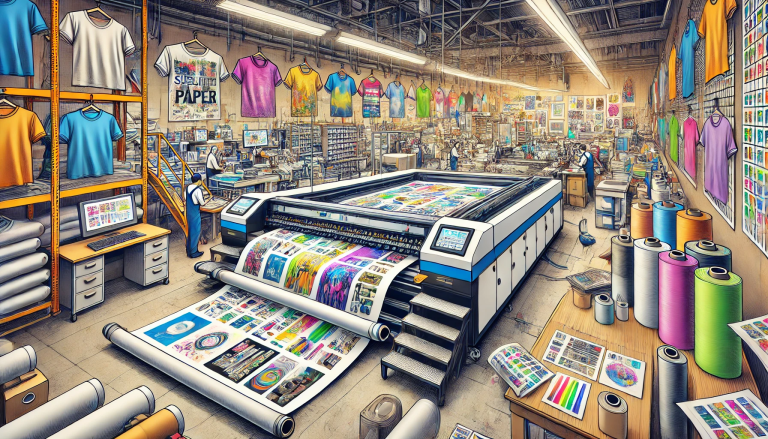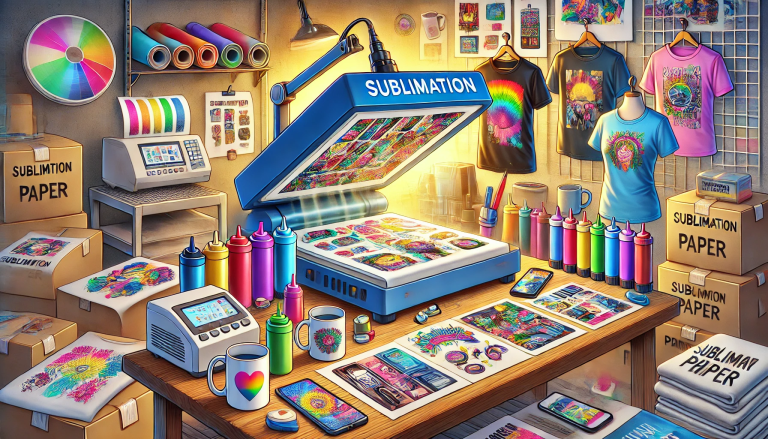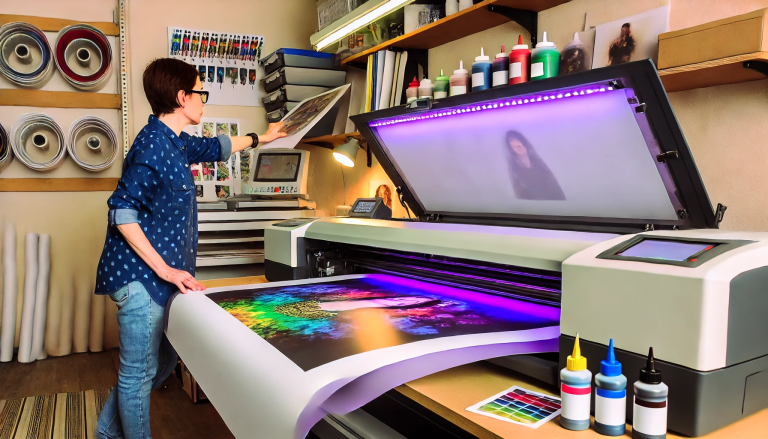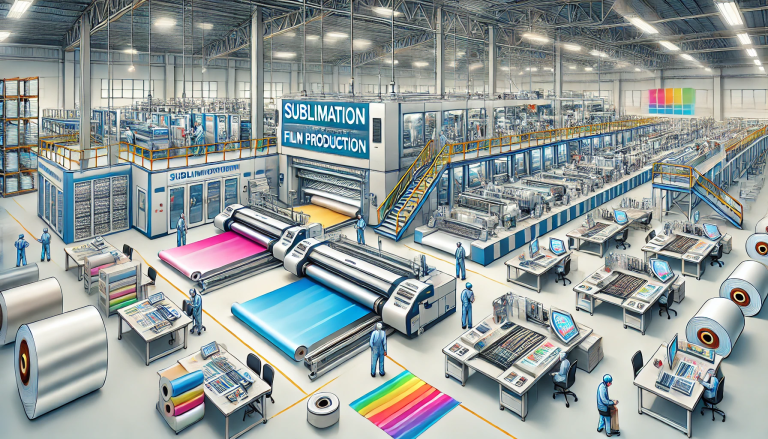- Item Code: CMFD100
- Weight: 100gsm
- Core Size: 2/3 Inch
- Available Width: 210/420/610/914/1118/1300/1600/1620/1800/1900/3200mm
- Available Length: Mini Roll / Jumbo Roll
- Package: Carton/Pallet
In the realm of digital printing, the emergence of dye sublimation printing has revolutionized the way we personalize and customize a wide range of products. From apparel and home decor to promotional items and industrial applications, dye sublimation offers unparalleled vibrancy, durability, and versatility. At the heart of this transformative technology lies dye sublimation printing paper—a specialized material designed to facilitate the sublimation process and unlock limitless creative possibilities.
This article explores the key features, applications, and benefits of dye sublimation printing paper, highlighting its significance in the world of digital printing and how it empowers individuals and businesses to bring their ideas to life.
What Is Dye Sublimation Printing Paper?
Dye sublimation printing paper is a high-quality, heat-sensitive paper specifically designed for use in the sublimation printing process. It works in conjunction with sublimation inks and a heat press to transfer vibrant designs onto polyester or polymer-coated substrates. The paper plays a critical role in ensuring the smooth transfer of ink from the printer to the final product, resulting in durable, high-quality prints.
Key Characteristics of Dye Sublimation Printing Paper
- High Heat Resistance: The paper can withstand temperatures of up to 400°F (200°C) during the sublimation process, ensuring that the ink transfers completely to the substrate.
- Optimal Ink Absorption: The paper’s coating is engineered to absorb and hold sublimation inks without bleeding or blurring, enabling sharp and detailed prints.
- Compatibility with Sublimation Inks: Unlike standard inkjet papers, dye sublimation paper is designed exclusively for use with sublimation inks, which are chemically formulated to sublimate under heat.
- Lightweight and Flexible: The paper is lightweight and easy to handle, making it suitable for a wide range of applications, from small crafts to large-scale industrial projects.
How Dye Sublimation Printing Works
The process of dye sublimation involves three main steps:
- Design Printing on Sublimation Paper: The desired design is printed onto dye sublimation paper using a sublimation-compatible inkjet printer. The paper acts as a temporary medium to hold the ink.
- Heat Application: The printed paper is placed on the substrate (e.g., polyester fabric, ceramic mugs, phone cases), and a heat press is used to apply high temperatures and pressure.
- Ink Sublimation: The heat causes the sublimation ink to transition from a solid to a gas, bonding with the substrate at the molecular level. Once the ink cools and solidifies, it becomes a permanent part of the material.
Applications of Dye Sublimation Printing Paper
The versatility of dye sublimation printing paper makes it suitable for a wide range of applications across various industries. Here are some of the most common uses:
1. Custom Apparel and Textiles
Dye sublimation is a popular choice for creating vibrant, personalized apparel. From t-shirts and hoodies to athletic wear and promotional uniforms, sublimation paper enables businesses to produce high-quality, durable prints on polyester and polyester blends.
- Sports Teams: Sublimated jerseys with team logos and player names.
- Event Merchandise: Customized apparel for concerts, conferences, or festivals.
- Fashion Design: Creative designs for streetwear, swimwear, and fashion accessories.
2. Home Decor
Sublimation printing paper opens up endless possibilities for home decor customization.
- Decorative Pillows: Unique patterns and designs for throw pillows.
- Wall Art: Sublimated prints on polyester canvas or other substrates.
- Kitchen Accessories: Customized coasters, placemats, and table runners.
3. Promotional Items
Businesses can use dye sublimation paper to create branded promotional items that leave a lasting impression.
- Mugs and Tumblers: Customized drinkware with company logos or designs.
- Phone Cases and Laptop Sleeves: Personalized protective covers.
- Tote Bags: Eco-friendly, sublimated bags for corporate giveaways or retail use.
4. Industrial and Commercial Applications
In addition to consumer goods, dye sublimation paper is used in industrial applications.
- Signage: High-quality banners and outdoor signage.
- Tech Accessories: Customized earphones, speakers, and other electronic accessories.
- Ceramic and Metal Products: Sublimated designs on tiles, plaques, and metal signs.
Benefits of Dye Sublimation Printing Paper
1. Vibrant and Long-Lasting Results
Sublimation prints offer unmatched color vibrancy, sharpness, and durability. The ink bonds with the substrate at the molecular level, ensuring that designs remain vibrant and fade-resistant, even after repeated washing or exposure to sunlight.
2. Versatility in Substrates
Dye sublimation paper can be used with a wide range of substrates, including polyester fabrics, ceramic, glass, metal, and polymer-coated materials. This versatility makes it ideal for both consumer and industrial applications.
3. Scalability
Whether you’re printing a single custom t-shirt or producing thousands of promotional items, dye sublimation paper accommodates both small-scale and large-scale production needs.
4. Eco-Friendliness
Many sublimation papers and inks are made from eco-friendly materials, making them a sustainable choice for businesses and individuals who prioritize environmental responsibility.
5. Cost-Effectiveness
While the initial investment in sublimation equipment may be higher, the durability and quality of sublimation prints reduce long-term costs, making it a cost-effective solution for businesses.
Choosing the Right Dye Sublimation Printing Paper
To maximize the potential of your sublimation projects, it’s essential to select the right type of dye sublimation printing paper. Here are some factors to consider:
1. Manufacturer Reputation
Choose a reputable brand known for producing high-quality sublimation papers. Look for reviews and customer testimonials to ensure the paper delivers consistent results.
2. Paper Weight and Thickness
The weight and thickness of the paper affect its durability during the printing and transfer process. Heavyweight papers are ideal for high-volume productions, while lightweight options are suitable for smaller projects.
3. Compatibility with Printers
Ensure the sublimation paper is compatible with your inkjet printer. Some papers are optimized for specific printer models, so check the specifications before purchasing.
4. Heat Resistance
The paper must be able to withstand the high temperatures required for sublimation. Look for papers with a heat resistance rating of at least 200°C (400°F).
5. Budget
Consider the cost of the paper and how it aligns with your production needs. While investing in premium sublimation papers may yield better results, affordable options are available for small-scale users.
Challenges and Considerations
While dye sublimation printing paper offers numerous benefits, there are a few challenges to keep in mind:
1. Limited to Polyester and Synthetic Materials
Sublimation works best on polyester or polymer-coated substrates. Natural fibers like cotton do not absorb sublimation ink effectively, limiting the range of materials you can work with.
2. Initial Investment
Sublimation equipment, including printers and heat presses, requires a significant upfront investment. This may be a barrier for small businesses or hobbyists.
3. Learning Curve
Mastering the sublimation process requires some practice. Proper alignment, temperature control, and substrate preparation are crucial for achieving optimal results.
The Future of Dye Sublimation Printing Paper
As technology advances, the capabilities of dye sublimation printing paper continue to grow. Innovations such as enhanced ink formulations, improved paper coatings, and more accessible equipment are making sublimation more accessible and versatile than ever before.
In the future, we can expect:
- Wider Substrate Compatibility: New materials and coatings that expand the range of substrates suitable for sublimation.
- Enhanced Durability: Sublimation prints that last even longer, even under harsh conditions.
- Lower Costs: Increasing affordability of sublimation equipment and materials, making it accessible to a broader audience.
Conclusion
Dye sublimation printing paper is a game-changing tool that empowers businesses and individuals to create vibrant, durable, and personalized products. Its versatility, scalability, and eco-friendliness make it an ideal choice for a wide range of applications, from custom apparel and home decor to promotional items and industrial products.
By understanding the unique features and benefits of dye sublimation printing paper, you can unlock new creative possibilities and elevate your printing projects to the next level. Whether you’re a small business owner, a professional printer, or a hobbyist, investing in high-quality sublimation paper is a smart choice that will yield exceptional results and lasting value.
Pigment Transfer Paper, Dye Sublimation Printing Paper, 125g 11×17, Sublimation With Regular Paper, Sublimation Paper 8.5 X14, 8×14 Sublimation Paper, Mug Printing Transfer Paper, Vinyl Sublimation Paper, Best Transfer Paper for Mugs, 125g 13×19, Heat Press Mug Paper, Sublimation Paper Inkjet Printer, Light Sublimation Paper, Dark Garment Sublimation Paper, Sublimation With Copy Paper, Dye Sublimation Printing Paper, Epson Ds Transfer Adhesive Textile Paper, 8×14 Sublimation Paper, Inkjet Sublimation Paper Printers Jack, Sticker Sublimation Paper, Best 11×17 Sublimation Printer, Dye Sublimation Printing Paper, 8×14 Sublimation Paper, Heat Press Mug Paper,





